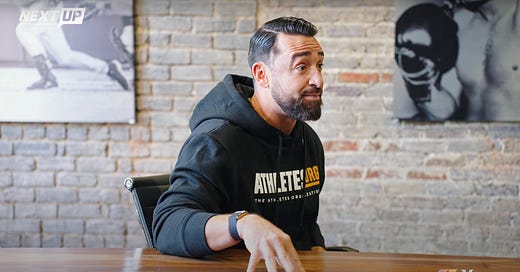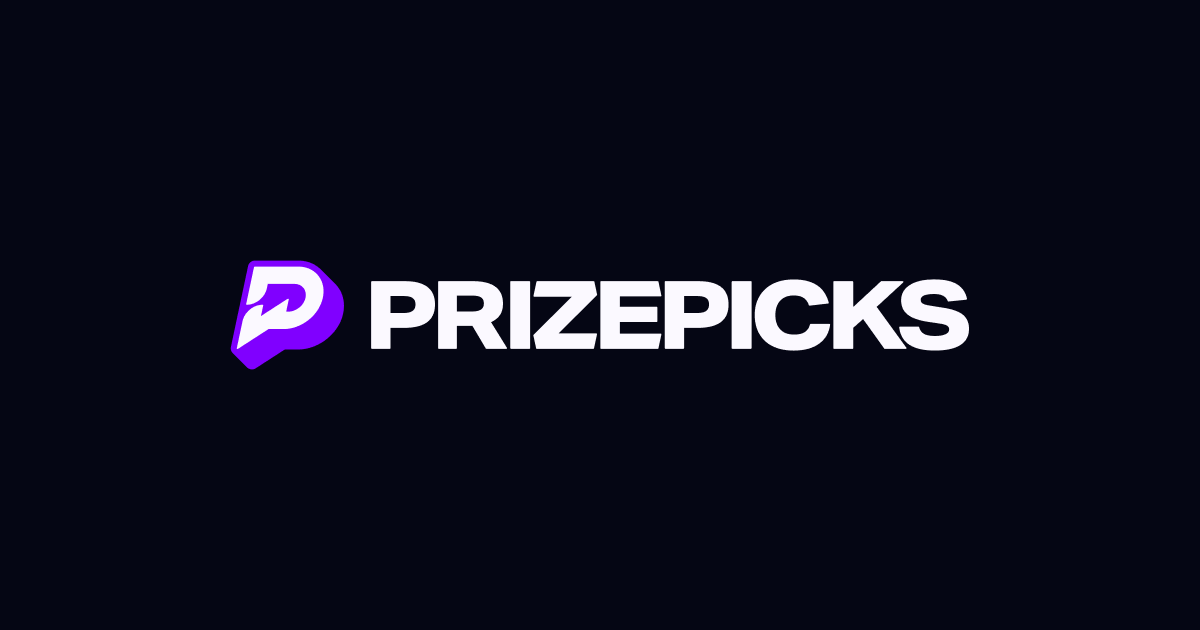🏈 🔵 How Jim Cavale Would Fix CFB's Broken System
Through Athletes.org, Cavale has helped college athletics leaders leave the preservation mode and become proactive in fostering a more sustainable earnings model for student-athletes.
Welcome to Blue Chip Journal by Adam Breneman — a 2x per-week newsletter with analysis, hot takes, and news on all things college football, NIL, and recruiting. Subscribe now and join nearly 13,000 other sports fans, and share this newsletter with all the college football fans you know!
Blue Chip Journal is a reader-supported publication. To receive new posts and support my work, consider becoming a free or paid subscriber.
How Jim Cavale Would Fix College Football’s Broken System
Hey friends,
On October 15, 2018, a new era in college football initially began as the transfer portal opened for the first time. In 2021, however, the NCAA issued a one-time transfer rule without a one-year penalty, granting players immediate eligibility at their next destinations.
The same year, NCAA members voted to allow college athletes to benefit from name, image, and likeness (NIL) opportunities, no matter where their school is geographically located.
In the first year alone, college athletes earned an estimated $917 million on NIL deals per Yahoo Finance. Since 2022, the NIL market has produced over $1.14 billion in athlete compensation.
But, just because NIL is currently “legal” under state guidelines and the NCAA’s organizational governance, the system needs a complete overhaul to better serve student-athletes — specifically college football players.
That’s where Jim Cavale comes into play.
About a month ago, I sat down with the up-and-coming entrepreneur to discuss how he would overhaul college football’s broken structure.
Cavale, the founder of INFLCR and Athletes.org, has a simple mission — “to provide athletes with the tools needed to set the stage for the rest of their lives.”
About seven years ago, INFLCR partnered with the University of Kentucky to help college athletes build more powerful social media brands. Now, his app works with over 2,000 college teams and has more than 100,000 active athlete users.
Currently, most of Cavale’s focus lies within the leadership of Athletes.org, which places college athletes into their own players’ association by delivering on-demand support.
Very few voices are tapped into college football’s future and how it should be altered like Cavale. Let’s take a look a three ways the impressive entrepreneur would better the sport for years to come:
The Implementation of Revenue Sharing is Essential
Nearly 18 months ago, the Big Ten finalized a new seven-year media rights agreement with Fox, CBS, and NBC that is set to bring in over $7 billion to the conference beginning in July 2023.
With the league’s addition of USC and UCLA, revenue will rise “substantially,” per ESPN’s Adam Rittenberg, during their first year of conference play beginning next fall.
Before the Big Ten elected to add four West Coast expansion squads, each member athletic department received $54.3 million from the conference in earned media revenue.
Now, the conference is projected to eventually distribute “$80 to $100 million per year” to each of its members.
In the NFL, players receive nearly 49% of TV revenue in each 17-game regular season. But, in college football, players receive zero of it.
For the sport’s financial model to reach a level of stability, Cavale thinks the adoption of revenue sharing is a no-brainer.
“My concern for the athletes is, ‘Yeah, you’re getting $300,000. But, what if you’re actually worth $3 million, and it’s a collectively bargained deal between your school’s conference and the NCAA that’s occurred?’” Cavale said. “What if you’re worth more than you’re getting? because that’s what’s fair? And so, those things make this feel like, in some cases [NIL is] hush money for athletes, and it’s a workaround in a band-aid to revenue sharing and would legitimize this more for the athletes.”
Recently, a wide-ranging bill proposed by Senators Cory Booker and Richard Blumenthal titled the “College Athlete Bill of Rights” proposed a national mandate for revenue sharing at the collegiate level.
“College athletes in sports that generate more revenue than the amount of money spent on scholarships for that sport would be required to be given 50% of the money left after subtracting the money spent on scholarships,” the bill suggested.
In Cavale’s estimation, revenue sharing is on the horizon and could fix the current shortcomings of NIL. But, right now, many of the top-end Power Five schools aren’t incentivized to make significant headway.
“What we have to realize is there needs to be incentivization and motivation for commissioners or ADs to want to work on this,” Cavale said. “One motivational piece is the sand timer I keep referring to, which are these court cases like House v. NCAA, NCAA National Labor Relations Board v. USC, [and more].”
Just Because NIL Really Stands For “Now It’s Legal” Doesn’t Mean It’s Sustainable
When name, image, and likeness (NIL) opportunities first became available for students, its mission was crystal clear.
The NCAA made it legal for companies and brands to use an athlete’s name, image, and likeness through marketing and promotional endeavors as a concept to fairly compensate college athletes.
Still, since NIL’s inception, the guidelines provided by the NCAA offer a loose, gray area that is left to be interpreted by lawyers and large donor-driven university collectives. Cavale put it this way:
“When you walk around New York City, as I do every month when I go to meetings, I smell marijuana everywhere,” Cavale said. “And, I always ask myself, ‘How many people there smoking weed right now bought it in the dispensary and pay taxes on it? But, how many bought it under the table down the street but they just feel good about smoking it out in the open now because hey, now it's legal?’ That's an NIL. There's a whole segment there.”
To Cavale, that’s exactly what NIL’s three letters stand for in its current form — “Now It’s Legal.” Just because NIL is legal doesn’t make prevalent pay-to-play initiatives right for donors or student-athletes.
In Cavale’s opinion, NIL’s effectiveness, as offered by the NCAA, is represented in just one out of every five deals done between players and brands.
The rest fall under the quieted “pay-to-play” foundation with zero return on investment opportunities for investors, or in most cases, donors with institutional alumni ties.
“NIL is 80% dollars from collectives going to athletes disguised as NIL deals for value exchanges that would justify in most cases, but not always,” Cavale said. “But, 20% [consists of] collectives paying athletes — and it's mostly football players, some basketball, some women's basketball. 20% is legitimate brand deals where [for example] Dunkin Donuts is picking 20 athletes to post on social and promote ‘Dunkin Christmas.’ So, that's an NIL, and the 80% are referred to as collectives is revenue sharing as a workaround.”
Cavale believes the introduction of revenue sharing trickling down to the student-athlete level will reduce “hush” pay-to-play deals, where in most cases, recruits aren’t able to ever receive the money “promised” upon commitment.
This newsletter is presented by... PrizePicks
PrizePicks is the easiest way to play daily fantasy. Getting started is very simple — register for an account, make a deposit, and pick more or less on 2-6 player stats to win payouts of up to 25x!
Aside from offering an initial deposit match of up to $100, fans can now use my promo code AdamB for an even BIGGER discount upon downloading the app. Click on the link below to get started today!
College Football Needs Its Own Commissioner Like The NFL
With college football’s current direction and trajectory, the NCAA appears to be on life support.
According to Cavale, the only way the organizational structure can survive in the long term is if it can effectively “govern its member schools and run championships.” Right now, that’s all it does in its current state.
“They don’t run the national championship (or playoff) for football anymore,” Cavale said. “March Madness is its most valuable property. They can’t set any rules because they can’t get protection from Congress.”
In Cavale’s estimation, the NCAA must quickly figure out if it can even be associated with college football anymore.
For that to become a reality, which is a pressing goal of current President Charlie Baker, an adequate level of oversight from Congress is essential to be considered a needed governance organization over the sport’s control.
As it currently stands, the NCAA’s involvement in college football, specifically, is looking like less and less of a future reality.
“If [the NCAA] can’t figure that out before they owe billions in these court cases, it’s going to be tough for them to survive,” Cavale said. “At that point, it goes down to these conferences, which are already doing some things on their own island. Media deals have been happening at the conference level for a while.”
While Cavale doesn’t think a current conference commissioner should step in to become a unifying rallying point for the sport’s future, he believes that a commissioner figurehead, like Roger Goodell in the NFL, could someday be present to provide clearer guidelines to programs.
“We’re excited to be a part of the solution,” Cavale said. “One side of the solution is organizing athletes better for the new deal. The other side of the solution is college athletics leaders leaving the preservation mode, getting proactive, and working on that.”
For more on my conversation with Cavale, the future of college football, and how to amend the broken NIL system, click here for my full Podcast episode with the insightful entrepreneur.
If you have any questions, comments, or feedback, please don’t hesitate to reach out to me by email at adam@brenemanmedia.com.
You can also find me on Twitter, Instagram, TikTok, LinkedIn or Facebook.
Shoutout to Connor Krause for helping to write this newsletter and putting it together!
Interested in advertising with Blue Chip Journal? Email me.










